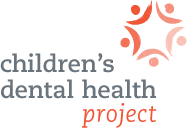The Children's Dental Health Project's blog
Opportunities to drive continued progress for children’s oral health
This blog was written by CDHP's director of policy, Colin Reusch.
As the Children's Dental Health Protect (CDHP) reflects on its 22 years of success advancing policies to improve the oral health of children and families, we recognize that there remains much work to be done. We are confident that our many national, state, and community partners are up to the task of achieving a future in which no one is held back from their dreams due to dental disease. As such, we offer a few parting thoughts on where advocates can focus their energy.
1. Expanding and improving coverage
While 90% of children now have some form of dental coverage, we have begun to see that progress erode. Federal and state policies have made it more difficult for children and their parents to get and maintain coverage, particularly through Medicaid.
Oral health contributes to both overall health and economic mobility, benefiting children, families, and communities.
Both Medicaid and the Children’s Health Insurance Program (CHIP) cover kids’ dental needs. These programs have been key to improving children’s access to oral health care. From moms like Jessica, young women like Deborah, and countless others, we know just how important the comprehensive coverage in Medicaid and CHIP is to kids, their families and their future. Advocates must remain vigilant in pushing back on policies like work requirements or unnecessarily burdensome eligibility tests, which create red tape for low-wage families and cause many to lose coverage. Our policies should be focused on making it easier, not harder, for children and families to get the care they need to thrive.
For children, both public and private coverage have become more robust. However, the administration of these benefits, either by insurers or state Medicaid agencies, can create barriers to individualized care. The status quo often reinforces a one-size-fits-all approach to oral health care instead of incentivizing prevention and appropriate management of tooth decay. State advocates are well-positioned to engage policymakers and plan administrators in examining strategies for improvement. Together, they can explore how to better align benefit and payment policies to ensure that every child is assessed for their risk for dental disease and receives care that is tailored to their individual health needs. Our 2019 brief and checklist for advocates can serve as a guide to start this process.
Many adults, including pregnant women, still lack adequate coverage and access to oral health care. Even in states that have expanded Medicaid under the Affordable Care Act, dental benefits are not guaranteed. If they are available, they are often at risk of being eliminated. And as our most recent coverage brief highlights, despite the clear connection between a mother and child's oral health, fewer than half of all states offer meaningful oral health benefits to pregnant women enrolled in Medicaid. Even when those benefits are comprehensive, because they are optional, they may end as soon as a woman gives birth. We hope that our partners in maternal health and elsewhere will continue to advance policy proposals like the MOMMIES Act and MOMMA Act. Both measures would require oral health coverage as part of pregnancy related benefits in Medicaid for at least one year postpartum.
2. Integrating coverage and interventions
Despite the ACA's steps toward incorporating oral health services into private health insurance, the financing and delivery of oral health care remains separate from the rest of our care. This separation presents itself through numerous facets of the system, from insurance plans and provider reimbursement to quality measurement and electronic health records. The result? Missed opportunities for care coordination and early intervention. What we should strive for is a model of care that better meets patients' needs by meeting them where they are, with a team of providers who are attuned to every aspect of their health, including their oral health.
Advocates must remain vigilant in pushing back on policies that create red tape for low-wage families, causing many to lose coverage.
As we continue to seek better value, a better patient experience, and improved health, our oral health must be a core part of our efforts to transform the health care system. It must not be left out of innovative payment models, integrated care models, or initiatives aimed at tackling health in concert with other barriers to success, like housing or employment. Evidence shows that oral health contributes to both overall health and economic mobility, benefiting children, families, and communities. We hope that new policies will emerge that incorporate oral health care as one of many tools to create a more equitable society.
3. Improving measurement
 As CDHP has stated many times, we only get what we measure for. When it comes to oral health, our systems still largely count dental visits rather than improved health for all populations. Do more appointments mean better health for all kids or adults? By changing the stick by which we measure success - whether for providers, health systems, or Medicaid programs - we can better determine the impact of care. That will help us incentivize care aimed at preventing and managing dental disease, like other chronic conditions, rather than simply treating its consequences.
As CDHP has stated many times, we only get what we measure for. When it comes to oral health, our systems still largely count dental visits rather than improved health for all populations. Do more appointments mean better health for all kids or adults? By changing the stick by which we measure success - whether for providers, health systems, or Medicaid programs - we can better determine the impact of care. That will help us incentivize care aimed at preventing and managing dental disease, like other chronic conditions, rather than simply treating its consequences.
As our 2017 report noted, to create a better system of measurement, we must improve public health data collection on oral health status and outcomes across populations. This goal also requires we advance more meaningful quality and accountability measures that can be tied to payment.
* * * * *
In some ways, CDHP’s transition marks the end of an era for oral health policy. But it also represents an enormous opportunity to incorporate oral health into broader systems transformation efforts. The oral health community itself has become more inclusive and cognizant of the need to address oral health not as a stand-alone issue, but rather as a component of health equity. We are hopeful that our partners in oral health — and beyond — will continue to forge ahead with policies that place oral health into a broader context, tearing down the walls that have harmfully separated oral health from the other factors that affect individual, family, and community well-being.
